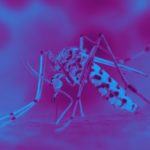Link to Pubmed [PMID] – 27020092
J. Infect. Dis. 2016 07;214(1):96-104
BACKGROUND: Increasing evidence suggests that antibodies against merozoite proteins involved in Plasmodium falciparum invasion into the red blood cell play an important role in clinical immunity to malaria. Erythrocyte-binding antigen 175 (EBA-175) is the best-characterized P. falciparum invasion ligand, reported to recognize glycophorin A on the surface of erythrocytes. Its protein structure comprises 6 extracellular regions. Whereas region II contains Duffy binding-like domains involved in the binding to glycophorin A, the functional role of regions III-V is less clear.
METHODS: We developed a novel cytometric bead array for assessment of antigen-specific antibody concentration in plasma to evaluate the efficacy of immune responses to different regions of EBA-175 and associations between antibody levels with protection from symptomatic malaria in a treatment-reinfection cohort study.
RESULTS: We found that while antibodies to region II are highly abundant, circulating levels as low as 5-10 µg/mL of antibodies specific for region III or the highly conserved regions IV-V predict strong protection from clinical malaria.
CONCLUSIONS: These results lend support for the development of conserved regions of EBA-175 as components in a combination of a malaria vaccine.

